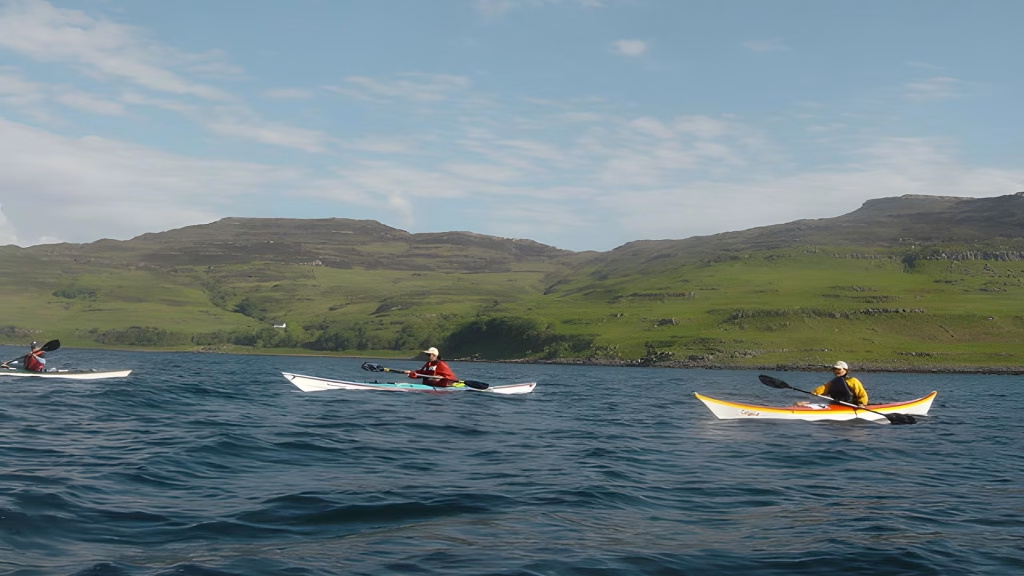Hidden beyond Ulva off the west coast of Mull, lies Gometra, one of Scotland’s wildest and most remote inhabited islands. With just a handful of residents, no mains electricity, and a journey that involves two ferries and a long walk across rough terrain, Gometra isn’t a place for the faint-hearted. But for those who make the effort, it’s one of the most extraordinary off-grid experiences in the Hebrides.

Where to Stay on Gometra
There are only two accommodation options on the island, both run by the small resident community and designed for visitors who want to experience life close to nature.
Jane Ann’s Bothy
A simple stone bothy sleeping up to four, with two single beds and a sofa bed. There’s an indoor bath heated by a wood-burner, an outdoor toilet, and no mains power, just lantern light and peace. Bring your own sleeping bag, cooking stove, and food. It’s about an eight-mile walk from the ferry landing on Ulva, so pack light but wisely.
Book this bothy now via AirBnB.
Teacher’s Bothy (Teacher’s Cottage)
Perfect for couples or solo visitors, this cosy twin-bedded cottage also has a bath warmed by a wood-burner and a small kitchen area. Again, you’ll need to bring all supplies and bedding. The atmosphere is rustic, silent, and profoundly peaceful, ideal for writers, artists or anyone seeking solitude.
Book this Bothy now via AirBnB.
What to Do During Your Stay
Life on Gometra is slow, quiet and elemental. There are no pubs, cafés or cars, just wind, sea and sky. Here’s how to make the most of your stay.
Walk and explore
The entire island is just over four square miles, but it feels vast. Follow sheep tracks over the hills to discover wild cliffs, hidden lochans and sweeping views of Ulva, Mull and the Treshnish Isles.

Watch wildlife
Red deer roam the interior, while seals bask on skerries and sea eagles soar overhead. Dolphins, porpoises and even minke whales are sometimes spotted offshore.
Sketch or photograph
The light changes constantly, from sudden downpours to shafts of sun that turn the sea turquoise. Gometra is a dream for painters and photographers.
Read, write, reflect
With no Wi-Fi or phone signal in many places, you’ll rediscover time to think, journal, or simply be.
Visit the honesty shop and gallery
A small self-service store and local gallery at Baileclaidh offer a glimpse of the island’s creative side. You might find handmade crafts or books by local artists.
Swim or kayak
For the hardy, sheltered bays along the south coast offer bracing wild swims, but tides and weather must be respected.

Visitor Tips
Prepare well. Bring all food, gas and essentials from Mull, as there are no full shops or restaurants on Gometra. Read our full guide on how to stay in a bothy.
Foot access only. Reach Gometra by ferry to Ulva, then walk or cycle about seven to eight miles across Ulva and over the tidal causeway. Good boots are essential.
Respect the community. This is a working, lived-in island with a population of just a few people. Keep to paths and respect private homes.
Plan for emergencies. There’s no doctor or quick evacuation. Always let someone know your travel plan.
Enjoy the stillness. Evenings by the fire with a book or a notebook are what Gometra is all about.

Why Go
Gometra offers a rare chance to unplug completely and reconnect with nature. It’s a living reminder of how the Hebrides once were, wild, windswept and deeply human. For a few days, you’ll become part of that rhythm, far from the noise of modern life.
From Craignure
Take the road west to Ulva Ferry, around an hour’s drive, then cross by the small foot ferry to Ulva. From there, follow the track across Ulva, about seven to eight miles, and over the stone causeway to Gometra. No vehicles, no shortcuts, and no stress, just the long, beautiful way round.

